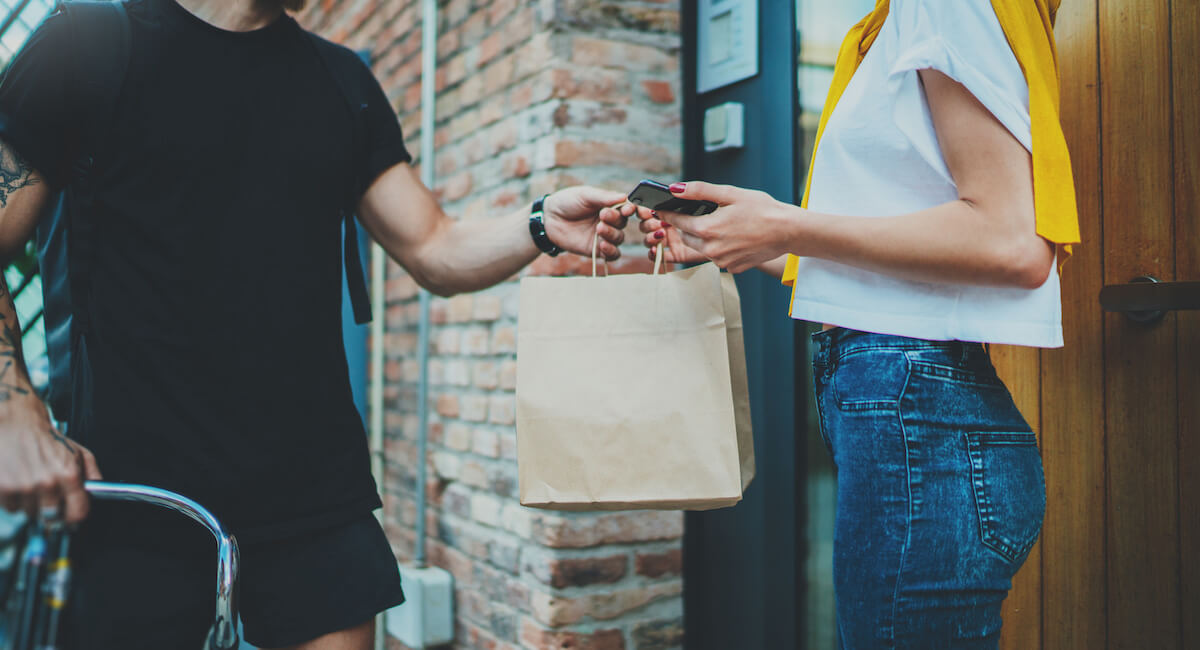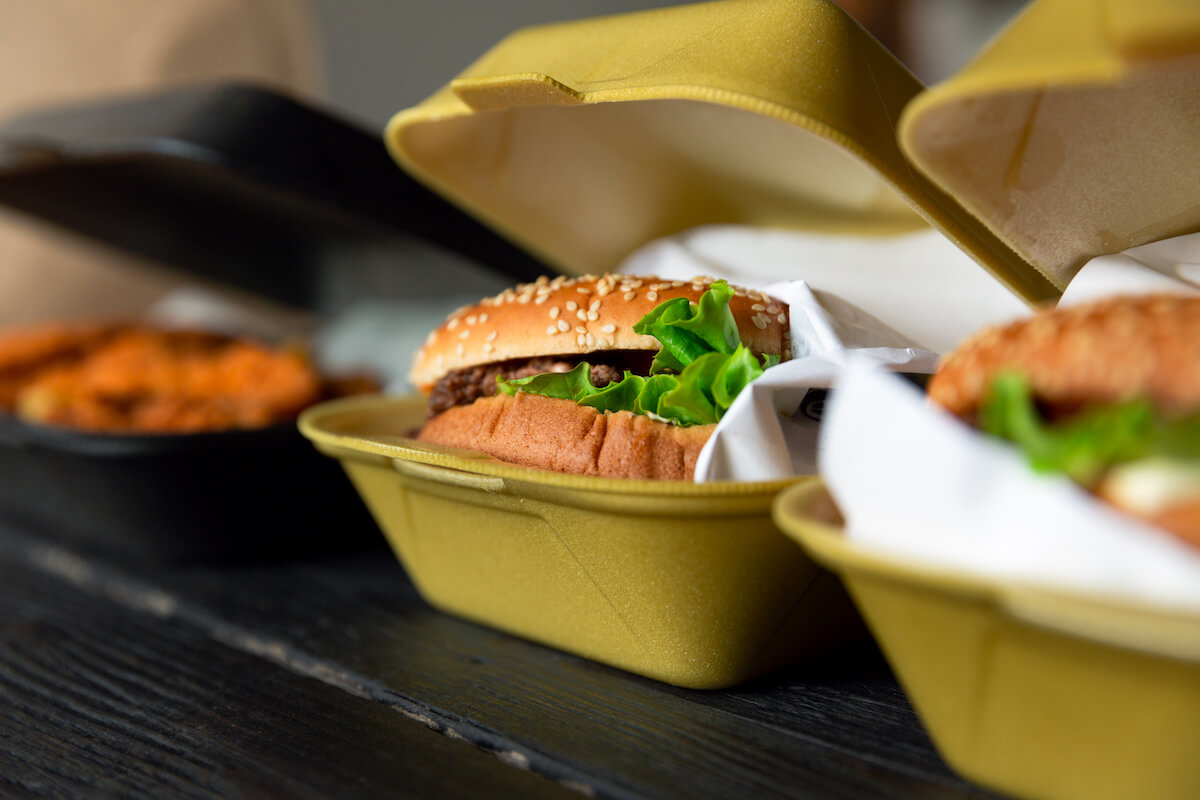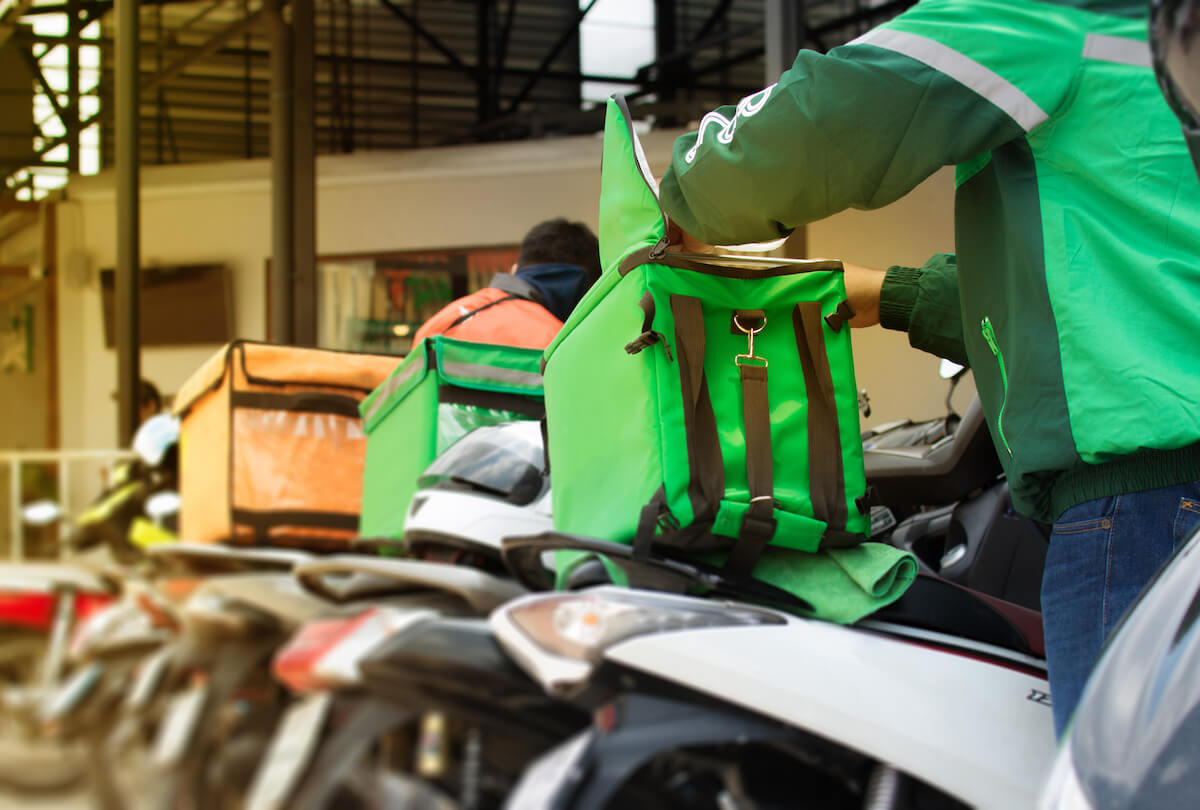Food delivery logistics: Set up a profitable system for your restaurant
Food delivery has been one of the restaurant industry’s fastest-growing segments, with the food delivery industry expected to reach nearly $200 billion by 2025. The pandemic further bolstered business for delivery apps such as DoorDash, Seamless, Uber Eats, and Postmates, with restaurant delivery software becoming a necessary crutch for restaurant chains and small businesses to lean on virtually overnight.
There’s much more to food delivery logistics than simply signing up for a delivery platform or hiring your own delivery driver. A proper restaurant delivery system requires a big shift in internal operations, from optimizing your supply chain to handle an increase in online orders to training your back of house staff to take those orders in real-time. Food delivery software is just one factor in a much larger ecosystem that requires restaurant management to ensure the same customer satisfaction in delivery that they do for dine-in and takeout clientele.
Follow these tips to set up your restaurant delivery system and food delivery logistics to maximize customer satisfaction and boost your bottom line.
The benefits of setting up a restaurant delivery system

Adding delivery service can make a game-changing impact on a restaurant’s business model, if done correctly. Delivery operations add a new revenue stream that allows restaurants to serve beyond their dining room capacity. Additionally, food delivery attracts a customer base that’s willing to spend 21% more than takeout customers.
While food delivery was essential during the height of the pandemic, it remains a valuable tool for many restaurants moving forward. Whether you’re opening a restaurant or simply looking to add delivery to your current business, here are some additional benefits that restaurant delivery systems provide:
- Increase sales: Online orders placed through delivery systems can come in at a much quicker rate than the front of house would normally be able to handle.
- Increase exposure: Listing your restaurant on a delivery service mobile app allows you to reach a new customer base that may not have otherwise discovered you. Even if you’re hiring your own delivery drivers, potential customers who look you up online may order from you just because you offer delivery service.
- Streamline operations: Adding food delivery service effectively takes your restaurant into the e-commerce world, balancing online orders with dine-in and takeout. Effective delivery management, like effective restaurant management, will engage and empower staff to develop systems to handle these different layers and increase efficiency across the restaurant.
Determining if food delivery is a good fit for your restaurant

While a restaurant delivery system can have a positive sales impact, that boost may not trickle down to the bottom line in all cases. Food delivery isn’t necessarily suitable for all restaurant and cuisine types, and a subpar delivery customer experience can have a negative impact in the same way a bad dine-in experience would. Ask yourself these questions to help determine whether food delivery is right for you:
- How long will your food stay fresh? Fried food, seafood, and cheese-heavy food are just a few examples of menu items that don’t hold their character for too long. You need to create an online menu that avoids these pitfalls. Unfortunately, even the most efficient delivery system can’t make up for deficient taste.
- What’s your target price point? Delivery apps act as aggregators for similar menu items across a wide range of restaurants, so if you’re a fine dining restaurant where pricing is justified by your ambiance, you may not be an ideal fit for the food delivery market.
- Can you afford it? Food delivery requires additional costs, such as packaging, delivery app and/or delivery driver fees, and potential upgrades to your POS system. Make sure your margins allow you to maintain profitability and justify the amount of time and energy required to set up a proper restaurant delivery system.
Making your restaurant delivery system profitable
Consider the following when building out your restaurant delivery system.
Hiring your own delivery fleet vs. using delivery apps
If you have the resources and an established customer base, hiring your own delivery fleet can be more profitable in the long run. With your own team of drivers, you have more control over the delivery experience, delivery zones, and ability to adjust driver ETA in real-time. As your delivery business grows, you’ll also have greater control over costs compared to paying third-party delivery fees. Just make sure you’re working with a food delivery software that operates on both iOS and Android, so you can best utilize your drivers.
Most restaurants don’t have the financing to hire their own drivers, and outsource food delivery to online ordering platforms like DoorDash, Uber Eats, and Grubhub. These services can go a long way in building up your customer base, enabling you to appeal to a technology-focused audience that may not otherwise order food from you. Managing food delivery logistics is a bit more challenging here since the delivery drivers aren’t on your staff, and these mobile apps do come with sizable fees.
Optimize your online menu and pricing
Your food delivery menu doesn’t have to mirror your dine-in or takeout menu. Select items that will best hold over the course of the delivery process, as well as items that your kitchen can prepare efficiently if the number of orders coming in ever becomes a lot to handle.
If you’re working with an outside food delivery service like Grubhub or Postmates, high-margin menu items will help make up for their commissions. Different delivery services have different policies on adjusting pricing to compensate for those fees, but if you’re able to do so, play around with different price points to see what will best boost your bottom line.
Tips for mastering food delivery logistics

Setting up a restaurant delivery system requires making changes to your regular operations to manage food delivery logistics. Consider the following to make food delivery as seamless as possible for your front and back of house staff.
Sync your POS with your online ordering system
Your point of sale (POS) system should automatically process online orders and send them to your kitchen. Delivery orders should be flagged so that they’re properly packaged and labeled for efficient transport once prepared. If you have a loyalty program, your POS and online ordering system should also integrate with that program for an optimal customer experience.
Reserve space specifically for food delivery
If delivery orders account for a sizable portion of your sales, then setting aside a designated space for delivery drivers to pick up those orders will cause minimal disruption to your standard operations and decrease delivery time. In some cases, where food delivery and even separate “ghost kitchen” restaurant concepts are a large part of the business model, restaurants will factor in those revenue streams when designing their floor plans.
Develop rapport with delivery drivers
If you’re hiring your own delivery fleet, treating those drivers the same way as the rest of your team goes without saying. But even if you’re working with third-party delivery services, chances are you’re going to see the same drivers time after time. Even though they’re not part of your staff, they’re still responsible for representing your brand and ensuring a positive customer experience. Make their lives as easy as possible so they will make the extra effort to deliver your food with care.
Take online ordering to the next level
Having a handle on food delivery logistics opens the doors to additional revenue streams beyond just delivery orders. Takeaway and curbside pickup can have a significant impact on sales and profitability without the hassle of hiring a delivery team, working with third-party delivery apps, or paying delivery fees. To make takeout even easier, Yelp has developed a groundbreaking takeout software that streamlines to-go operations. Track orders, message customers, and manage inventory from one iPad.
Takeout management is just one part of Yelp for Restaurants’ complete front of house system, which allows restaurant owners and managers to easily handle reservations, waitlists, connecting with new customers, and more. Learn more about how Yelp for Restaurants can save you time and boost your bottom line.